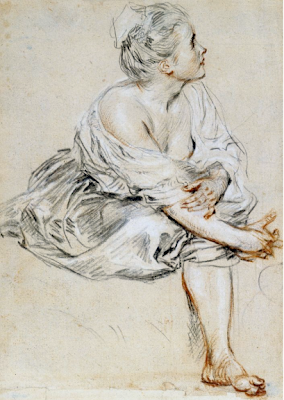...polling makes the British public's position devastatingly clear (summary here). It shows that just 26 per cent view our EU membership as a good thing.
Yet this is the view of 100 per cent of the main parties in the House of Commons. There is a large democratic deficit here, a gap that might yet be filled by another party.
...these issues are complex, lawyerly – can we expect ordinary folk to reach an informed opinion based on a hunch? Does the bouncer's opinion count for as much as the barrister's?
To me, this questions cuts to the very nature of left vs right. I'm a free marketeer because I believe that the masses are smarter than the elites.
Stanford academic Thomas Sowell argues that the world is so complex that no one person can possess "even one percent of the knowledge currently available, not counting the vast amounts of knowledge yet to be discovered". So, "the imposition from top down of the notions in favour among elites, convinced of their own superior knowledge and virtue, is a formula for disaster".
Hence central planning, the Soviet Union, etc. As Sowell says, the real ideological fault line – rather than the diminishingly useful party political labels – can be drawn here.
How do you define knowledge? Do you see it as something that is concentrated (i.e. in universities and libraries) or spread across society? If you believe the former, then you're on the side of the Polly Toynbees and the Tory Paternalists who believe power (and money) should rest with an enlightened elite.
If you believe the latter, then you'll be in favour of transferring power to the many, not the few, and be against nicking their cash.
I think this is the problem with the whole left/right paradigm, as it is now manifest in American politics. I thought it was interesting that the OWS "protesters" used the term "Republican" exclusively as a political insult. I imagined what they would make of me, a right wing Anglo-Canadian who lives in Europe. I would obviously have had to correct them if the epithet Republican were aimed at me, because I am not an American and, frankly, don't know very much about the details of American politics (it's not my beat).
The idea that Fraser Nelson puts forward above shows a basically stagnant, and unwinable, situation in the political realms in Britain and the US. While in most of Europe, the "right" has failed and when one is presented with even the most extreme, fringe "right wing" parties like the BNP you find that a brief analysis shows they are still in favour of state-enforced wealth re-distribution that we used to recognise as socialism.
What is needed is a genuine new paradigm. I am not myself qualified to offer one, but I believe that the Catholic Church offers a solution that transcends the inescapable battle over class wars, top-down elites vs. freemarketeers. The trouble with the Marxian paradigm is not that Marxism, whether cultural or the more direct kind in China and the former Soviet Union, presents a threat to the "free world". It is that the Marxian worldview, the framework and terminology presented by the Marxist idea, has cornered the market on political thought. No one in the business of political and economic ideas seems capable of thinking outside the Marxist box.
No one, including the left in the Church, seems to have read the social encyclicals in the context of Catholic moral teaching.
I wonder, however, if a door and a path out of the interminable lockdown of the Marxist paradigm, can't be found by looking there.
~







<br /><br /><br /><br />~
<div style='clear: both;'></div>
</div>
<div class='post-footer'>
<div class='post-footer-line post-footer-line-1'>
<span class='post-author vcard'>
<span class='fn' itemprop='author' itemscope='itemscope' itemtype='http://schema.org/Person'>
<meta content='https://www.blogger.com/profile/03771332473693479830' itemprop='url'/>
<a href='https://www.blogger.com/profile/03771332473693479830' rel='author' title='author profile'>
<span itemprop='name'>Hilary Jane Margaret White</span>
</a>
</span>
</span>
<span class='post-timestamp'>
at
<meta content='https://anglocath.blogspot.com/2011/10/accademia-di-belle-arti.html' itemprop='url'/>
<a class='timestamp-link' href='https://anglocath.blogspot.com/2011/10/accademia-di-belle-arti.html?m=1' rel='bookmark' title='permanent link'><abbr class='published' itemprop='datePublished' title='2011-10-24T14:40:00+02:00'>2:40 pm</abbr></a>
</span>
<span class='post-comment-link'>
<a class='comment-link' href='https://anglocath.blogspot.com/2011/10/accademia-di-belle-arti.html?m=1#comment-form' onclick='javascript:window.open(this.href, ) No comments:
No comments:









